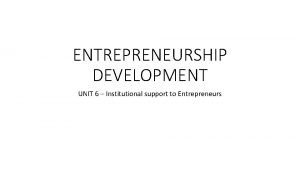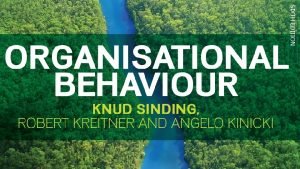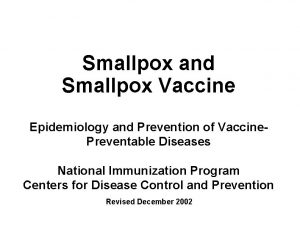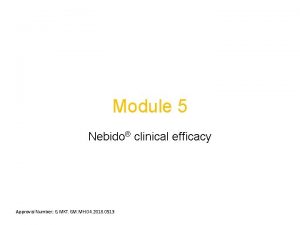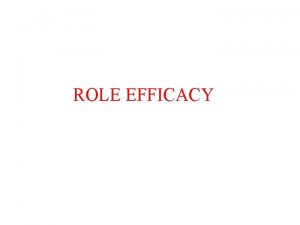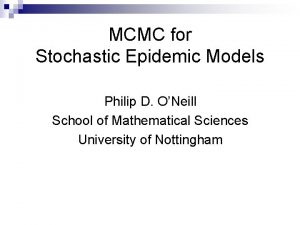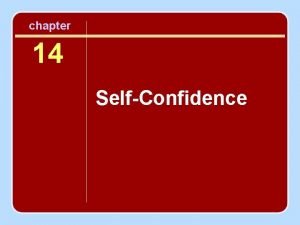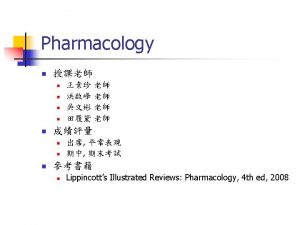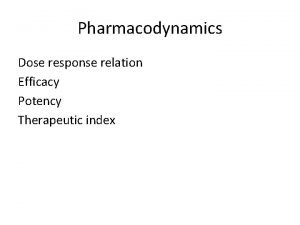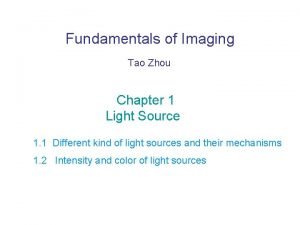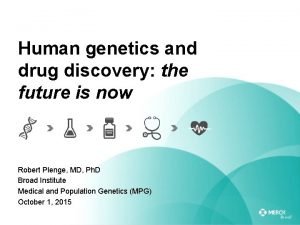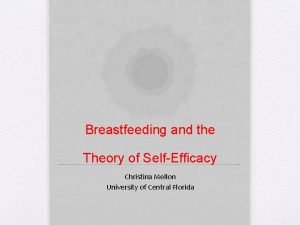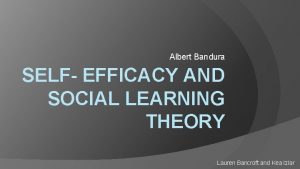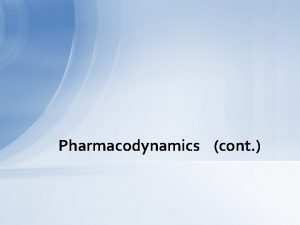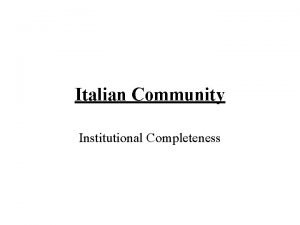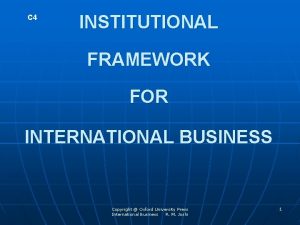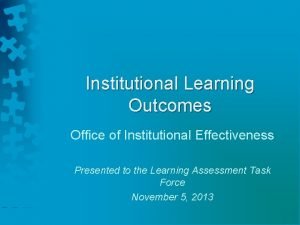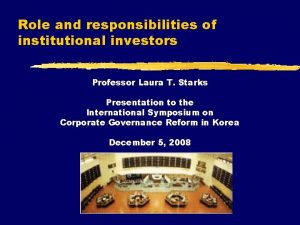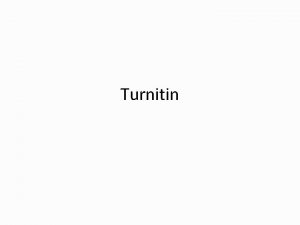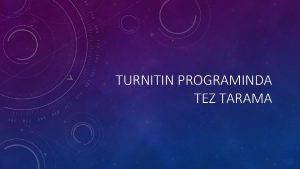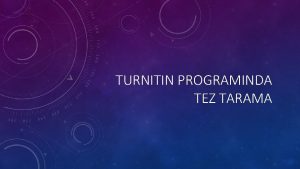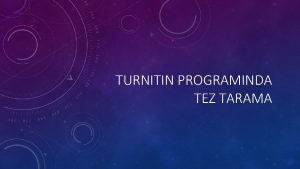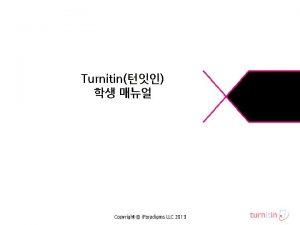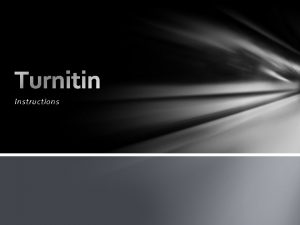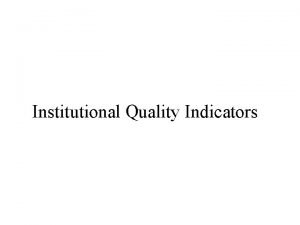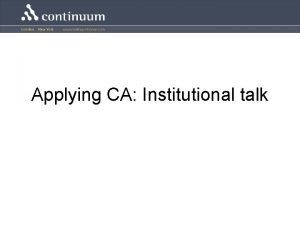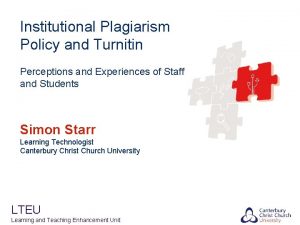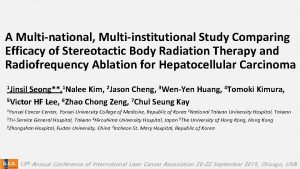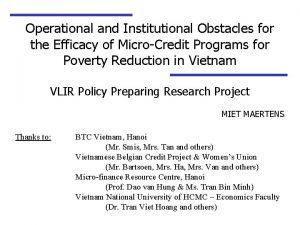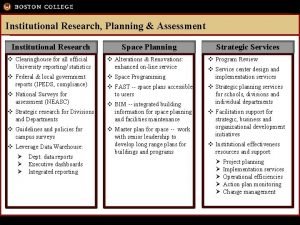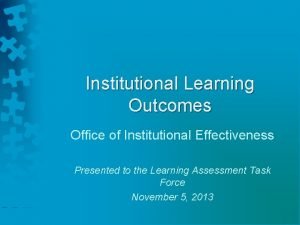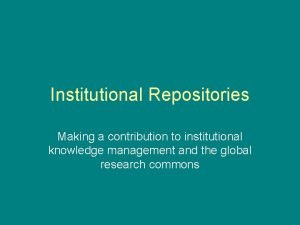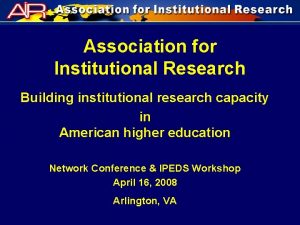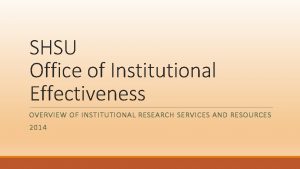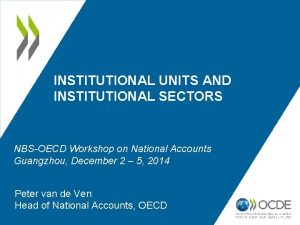Efficacy of Turnitin in Support of an Institutional

























- Slides: 25

Efficacy of Turnitin in Support of an Institutional Plagiarism Policy Institution-wide Research at Canterbury Christ Church University 2010/11 Simon Starr Learning Technologist LTEU Learning and Teaching Enhancement Unit

Outline About our plagiarism policy A case for research Findings perceptions and values efficacy of Turnitin Conclusions and recommendations Questions & discussion LTEU Learning and Teaching Enhancement Unit

Our plagiarism policy LTEU Learning and Teaching Enhancement Unit

Plagiarism Policy Educate to avoid first, detect and punish second Formative Experience Up Front Briefin g Whole Group Submission LTEU Learning and Teaching Enhancement Unit Proce dures for Dealin g with Allege d Plagiar ism Educational Use of Turnitin

About the research LTEU Learning and Teaching Enhancement Unit

A case for research Turnitin in Plagiarism Policy 2007/8; but no internal evaluation Not much external institutional-level research: • lack of “investigation of the impact of these tools [such as Turnitin] on staff teaching practices” (Badge, 2009) • focus on individual programmes (Davis & Carroll, 2009; Mc. Carthy & Rogerson, 2009; Wiggins, 2010; Flynn, 2010) Research aims: across the institution: • • • gauge understanding and perceptions of policy establish how Turnitin is used assess impact of Turnitin; efficacy in support of the policy LTEU Learning and Teaching Enhancement Unit

Method • • Staff surveys and interviews Student surveys and extended e-mail questionnaires Turnitin submission stats Learning technology team records Surveys Interviews 400 35 30 300 25 20 Non-user 0 Use Turnitin Learning and Teaching Enhancement Unit af f ng St No n- te ac hi ng hi Te ac LTEU (n = n= s( en t ud Teaching Staff (n=62) St Students (n=367) 15 34 ) ) 0 9) 50 5 n= Use Turnitin 100 f( 150 15 10 af Non-user St 250 200

Limitations: • low response rates (62 teaching staff=12%, 367 students=2%) • small interview samples (26 teaching staff=5%, 34 students=0. 2%) • Correlating students with programmes (survey didn’t ask programme, only Faculty; interviews had multiple students per programmes, also joint hons) LTEU Learning and Teaching Enhancement Unit

Findings perceptions and values LTEU Learning and Teaching Enhancement Unit

Findings – What do STAFF PERCEIVE? Perceive Policy = education Confuse policy with procedures for dealing with plagiarism. staff Understanding through Turnitin advice and Perceive guidance? Turnitin = education Perceive Turnitin = detection Perceive Policy = standards and rigour LTEU Learning and Teaching Enhancement Unit

Findings – What do STAFF VALUE? Value education in Policy staff Perceive and value educational aspect of policy. Value Turnitin for both help educating students as well at cutting ‘leg work’ in detection Value Turnitin for detection Turnitin for education Value standards and rigour in Policy LTEU Learning and Teaching Enhancement Unit

Findings – What do STUDENTS PERCEIVE? Perceive Policy = education Perceive Turnitin = detection Perceive Turnitin = education students educational approach perceived more: - L 4 - after using Turnitin Perceive Policy = standards and rigour LTEU Learning and Teaching Enhancement Unit

Findings – What do STUDENTS VALUE? Value education in Policy Two camps: 1. Catch and punish cheats 2. Help me with my work Value Turnitin for detection student s Value standards and rigour in Policy LTEU Learning and Teaching Enhancement Unit Turnitin for education

Findings efficacy of Turnitin in support of the policy LTEU Learning and Teaching Enhancement Unit

Findings – Range of Use and Satisfaction More widely used than we thought • • third of students representing 40+ programmes used on a least one programme in most departments High staff and student satisfaction Non-users willing to adopt Experience of Turnitin 90, 00% 80, 00% 70, 00% 60, 00% 50, 00% Why so little negativity? 40, 00% Staff Students Perhaps because something for everyone: 30, 00% 20, 00% • • standards/detection education/avoidance LTEU Learning and Teaching Enhancement Unit 10, 00% Positive/v. positive Indifferent Negative/v. negative

Findings – Use of Turnitin Policy’s minimum requirements for use of Turnitin being met Turnitin appears to contribute to detection in significant minority of plagiarism cases Find also significant ongoing educational use … LTEU Learning and Teaching Enhancement Unit

Findings – Use of Turnitin Planning for Strategies for Using Turnitin (as proportion of programmes analysed) more … minimum: initial formative experience ongoing: view own originality reports ongoing: self-check a draft Note: % programmes approximated. Survey did not ask programme. Interviews include joint hons students. • • survey: 54/166 see final OR for final submission; unclear on drafts interviews: students on at least 7/18 programmes see final OR; submit drafts for at least 3/18 programmes supported by staff interviews LTEU Learning and Teaching Enhancement Unit

Findings – Impact Clear impact on education to avoid plagiarism, also some on referencing and writing generally … Perceptions of Impact of Turnitin (note student based on interviews – small sample) 60, 00% 50, 00% 40, 00% 30, 00% Students 20, 00% Staff 10, 00% helped avoid improved plagiarising referencing LTEU Learning and Teaching Enhancement Unit improved writing generally

Findings – Impact Demand also for more ongoing educational use from students (although level hard to gauge) Students want help interpreting originality reports. Concerns over ‘common language’. “It has been fine to use and pretty clear in its use. In our first year we were able to send drafts for originalty [sic] reports, however I believe our second and third years we are not allowed. It would be nice to continue to be able to do so as it was useful learning aid and would continue to be so in the future. ” “It would be helpful if we actually got to see the reports that are run on our submitted work. Then it will actually be a learning experience as opposed to a hoop we have to jump through. ” “It will help me to learn more about the style of writing, how to reference properly and to avoid using too many quotations; so I believe it will improve my work. ” LTEU Learning and Teaching Enhancement Unit

Conclusions and Recommendations LTEU Learning and Teaching Enhancement Unit

Conclusions We conclude: • • • Policy and Turnitin about education as well as detection generally understood • but students lack awareness of educate-first Turnitin effective in supporting policy • demonstrable impact on educating to avoid • does aid detection, procedures for dealing with plagiarism • high staff/student satisfaction • demand for more ongoing educational use Students want help interpreting originality reports Note limitations: survey response rates/ interview sample sizes LTEU Learning and Teaching Enhancement Unit

Recommendations We recommended: • policy reviewed with a view to extending use of Turnitin • awareness raising of educational potential of Turnitin • enhanced guidance on interpreting originality reports Progress: Revised plagiarism policy agreed in principle by Academic Board: • Turnitin for all coursework levels 4 -7 • opportunity to self-check a draft every time • feedback/guidance on originality reports at early stages LTEU Learning and Teaching Enhancement Unit

References Badge, J. (2009). ‘Dealing with plagiarism in the digital age’. Available at http: //evidencenet. pbworks. com/Dealing-with-plagiarism-in-the-digital-age [Accessed: 16 May 2011] Davis, M. , Carroll, J. (2009) ‘Formative feedback within plagiarism education: Is there a role for text-matching software? ’ International Journal for Educational Integrity 5(2) pp 58– 70. Available at http: //www. ojs. unisa. edu. au/index. php/IJEI/article/view/614 [Accessed: 16 May 2011] Flynn, S. (2010) ‘Using Turnitin with large classes to support student writing’ Paper presented to the Fourth International Plagiarism Conference, Northumbria University. Available at: http: //www. plagiarismadvice. org/conference/previous-plagiarismconferences/4 th-plagiarism-conference-2010 [Accessed: 16 May 2011] Mc. Carthy, G. , Rogerson, A. (2009) ‘Links are not enough: Using originality reports to improve academic standards, compliance and learning outcomes among postgraduate students’ International Journal for Educational Integrity 5(2) pp 47– 57. Available at http: //www. ojs. unisa. edu. au/index. php/IJEI/article/view/613 [Accessed: 16 May 2011] Wiggins, C. (2010) ‘Turning Points: Building a framework for active student engagement and learning with Turnitin’ Paper presented to the Fourth International Plagiarism Conference, Northumbria University. Available at: http: //www. plagiarismadvice. org/conference/previous-plagiarism-conferences/4 thplagiarism-conference-2010 [Accessed: 16 May 2011] LTEU Learning and Teaching Enhancement Unit

Questions? Starr, S. , Graham-Matheson, L. (2011) ‘Efficacy of Turnitin in Support of an Institutional Plagiarism Policy’ Available at: plagiarismadvice. org simon. starr@canterbury. ac. uk LTEU Learning and Teaching Enhancement Unit

Questions for further research Q. What is the actual demand for ongoing educational use of Turnitin? Q. Does ongoing educational use have any more impact than the required initial formative experience by itself? Q. Why are numbers of plagiarism panels increasing if we think this research shows Turnitin helps reduce plagiarism? LTEU Learning and Teaching Enhancement Unit
 Institutional support to entrepreneurs in india
Institutional support to entrepreneurs in india Collective teacher efficacy
Collective teacher efficacy Types of personality in organisational behaviour
Types of personality in organisational behaviour Vaccine efficacy
Vaccine efficacy Nebido effectiveness
Nebido effectiveness Efficacy therapy
Efficacy therapy Collective teacher efficacy
Collective teacher efficacy Role efficacy
Role efficacy Vaccine efficacy
Vaccine efficacy What is optimal self confidence
What is optimal self confidence Efficacy potency
Efficacy potency Collective teacher efficacy
Collective teacher efficacy Therapeutic index
Therapeutic index Luminous efficacy comparison chart
Luminous efficacy comparison chart Drug efficacy
Drug efficacy Self-efficacy theory
Self-efficacy theory Albert bandura self-efficacy
Albert bandura self-efficacy Potency vs efficacy
Potency vs efficacy Drug efficacy
Drug efficacy Major details and minor details
Major details and minor details Product vs institutional promotion
Product vs institutional promotion Institutional completeness sociology
Institutional completeness sociology Institutional framework for business
Institutional framework for business Institutional medicaid
Institutional medicaid Institutional learning outcomes examples
Institutional learning outcomes examples Roles and importance of institutional investors
Roles and importance of institutional investors
